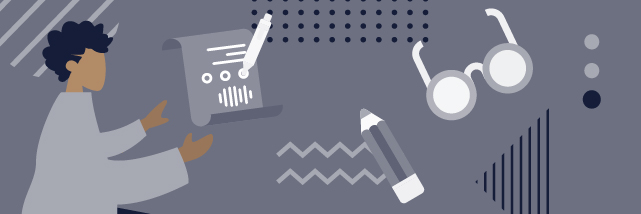So, you’re a talented artist who’s got a natural talent for sketches and scenes. Good on ya! Now, after all this time polishing your craft, you’re thinking about going pro. Learning how to become a storyboard artist may seem like a daunting task. Trust me: it’s not! If you follow some simple steps, you’ll be earning the big bucks in no time! Just think of me when you’re eating cacio e pepe on the coast of Italy. Send me a food pic on the ‘Gram as well.
This post was updated in June 2021
The Basics
What does a storyboard artist do, anyway? Good thing you asked, or I would’ve just been talking to myself. Let’s try to set a scene here: a film director’s going to make a movie; they have a script, ideas about how to shoot everything, but something’s missing. That’s when the storyboard artist comes in. They create a visual representation of the film or animation’s narrative; they translate what’s on the page into sketches and pictures.
In a way, a storyboard resembles a comic book. It’s a sequential visual narrative that conveys angles, the positions of actors and characters, and the events that happen in a scene. In a way, storyboards serve as the blueprint for visual productions. You’d be surprised at just how faithful the final result often is to the storyboard. While storyboards frequently go through many iterations, the idea is to produce a 1/1 translation to the screen.
Storyboard artists, then, need to be extremely good listeners, readers, and interpreters. They have to be great at conveying written ideas visually, and also at understanding the director and creative team’s guidelines. When they do the job right, their work becomes the one true basis for the final product.
Learning How To Become a Storyboard Artist
First and foremost, what do you need?
- It helps to be a good artist. You don’t have to be Matisse, mind you. But being good at sketching and having a dynamic art style are definite perks.
- You need to have a knack for storytelling. After all, storyboarding is all about creating an easy-to-follow visual narrative.
- It’s essential to have a good knowledge of animation. The basics are composition, layout, framing, sequential drawing, and editing. Being animation-literate doesn’t just save headaches, it’s an inextricable part of a storyboarder’s language. It’s not just about drawing, but about relaying camera and character movements.
- Passion for the medium. Whether you’re working on a video game, movie, animated feature, or short script, it helps to be immersed in the medium. This means having soaked up the visual language, references, and identity of great previous works.
- Initiative is a big perk. This translates to watching and listening a lot; being able to understand what’s being said by the creative team and reading between the lines is crucial. You don’t set the tone and pace of the scenes, they do. That’s why you need to know what they want even better than they do themselves.
Of course, learning how to become a storyboard artist takes more than that. You’ll need to constantly update your skill set, for one. Practice makes perfect, and in the world of art and illustration, this saying goes double. There’s no room for rust in the storyboard profession, not if you want to succeed.
How Much Does a Storyboard Artist Make Per Year?
As with all of the art professions, salaries can be extremely variable. The top echelons can be super-high earners, while even the lower rungs of the ladder are above-average. Your salary will depend on your skills, how well you’re able to pitch yourself, whether you’re self-employed or working directly for a company, how many jobs you’re able to complete per year, and more. Don’t be discouraged, though; the median salary for storyboard artists is squarely within the “pretty, pretty, pretty good” category. In fact, get ready to get your mind blown, and be majorly enticed.
According to Zipia.com:
Storyboard artists in the United States make an average salary of $92,425 per year or $44.44 per hour. People on the lower end of that spectrum, the bottom 10% to be exact, make roughly $57,000 a year, while the top 10% makes $148,000. As most things go, location can be critical. Rhode Island, Connecticut, New Hampshire, Nevada, and Maine provide the highest storyboard artist salaries.
(…) To earn a high income as a storyboard artist, working for The Walt Disney Company or CBS might be your best bet, as they are the highest paying companies in this field. In addition, companies like Activision, Blizzard, and Lucasfilm report highly competitive salaries for storyboard artists.
If an average of nearly $100k a year doesn’t sound amazing, I don’t know what does. Well, maybe ice cream, but I was never much of a long-term thinker. You be the judge.
How to Become a Storyboard Artist: Building Your Portfolio
The first step in learning how to become a storyboard artist is building a solid portfolio. Sure, experience is king in every profession, but that doesn’t mean you can’t start from the bottom. Only, don’t think you’ll be starting out working for Pixar. You need to build yourself up first, and then work your way upward, as with anything in life.
At first, you’ll be including selected sketches and mock-ups in your portfolio. Maybe try creating a few samples for fictional movies to showcase your talents. Even if you don’t have real experience, that doesn’t mean you can’t show you’ve got actual goods. As you steadily start gaining clients, you’ll be able to fill up your portfolio with actual paid jobs instead of screaming loudly “I’m good, I’m good, I deserve to be paid for this!” Such is life, sometimes.
On the note of clients, remember to curtail your expectations at first. Expect to start working with smaller clients, like mom-and-pop stores that are making their first video, or small indie game studios. As you gain confidence and experience, you’ll start applying for better and higher-paying jobs. How long does it take to gain your sea legs? It depends on how much you work, your starting level of skill, and how quickly you progress. When learning how to become a storyboard artist, there’s never a point where you’ll hear a voice from on high saying “You’re ready!”

On That Note…
Pixar’s story supervisor, Ted Mathot, has a few nuggets of wisdom about building your portfolio. A few years ago he posted “Story Advice” on Tumblr. When asked how to present one’s portfolio when applying for a big company, he said:
(…) Include only your best stuff and make an impact quickly. Camera instructions are ok if they’re simple, but your boards should tell the story visually. (…)
(…) Also, in terms of text, excessive dialogue on boards is not going to help you, as the reviewers simply don’t have time to read it. (…)
Nothing will make a better impression than when your boards are clear, well drawn, staged, and composed. A high level of finish doesn’t mean anything unless you have achieved the elements listed above.
Working in different styles is a plus because all the directors have different ways in which they work, and many times artists need to mimic others’ styles in order for the production reels to be uniform.
(…) Keep it brief. 15-20 pages of boards is good… make sure that the boards read clearly at the size you choose to make them. 6- 9 panels per page preferably.
Go and read the whole thing if you’re interested. While these choice cuts are good, they’re not enough to convey the million-buck wisdom in his self-interview. Remember: include your best stuff, make an impact, don’t clutter, keep it brief, and, of course, be confident in the amazing quality of your art.
How to Become a Storyboard Artist: Where?!
Now, this is sometimes a bit of a mind-boggler for many. It’s the vertigo of beginnings, right? “Where do I start working, how do I gain clients?!” Well, don’t fret, because the answer’s quite simple and it’s actually quite liberating as well.
Everything’s on the internet these days. This is even truer in the post-COVID age. Remote work is all the rage, and many places don’t even require you to be “at the office” anymore. Many places are working with distributed, global teams that are able to perform just as well as — or even better than — in-person ones. That means there’s plenty of work available in the world of freelancing.
Freelancing Sites
Where then? Freelancing platforms offer plenty of work for both up-and-coming and experienced storyboard artists. These are a great choice whether you’re just starting out or are already going in hard. They’re a great way to build your portfolio, steadily build up a clientele, and gain experience quickly. Another amazing perk is that you’ll be working from the comfort of your own home (or the beach, for that matter, dream big!).
It’s really easy to set up an account, upload some samples, and get crackin’! Don’t be discouraged if at first you only land small jobs, though: over time, you’ll steadily build up your reputation and start landing bigger and better clients. It also means that the big fish will also start taking notice, and maybe hire you for a job themselves if you manage to stand out from the pack.
That being said…
The Best Place Around
If you want to learn how to become a storyboard artist, there’s no better place than Bunny Studio. We are a multi-disciplinary team of design, voice, writing, marketing, and video experts from all over the world. We hire only the best and brightest, but we’re always interested in fostering up-and-coming freelance talent.
Whether you’re just starting out or are a bright star on the firmament, we’d love for you to give us a try and sign up with us. If we accept you (and that’s a pretty big if, as only 2% of talent makes it into our ranks), we’ll offer you steady access to clients, more work than you can shake a stick at, and amazing growth opportunities.
If you’re ready to take your freelancing seriously, then Bunny Studio is definitely the place for you. We could always use an amazing storyboard artist like you.










